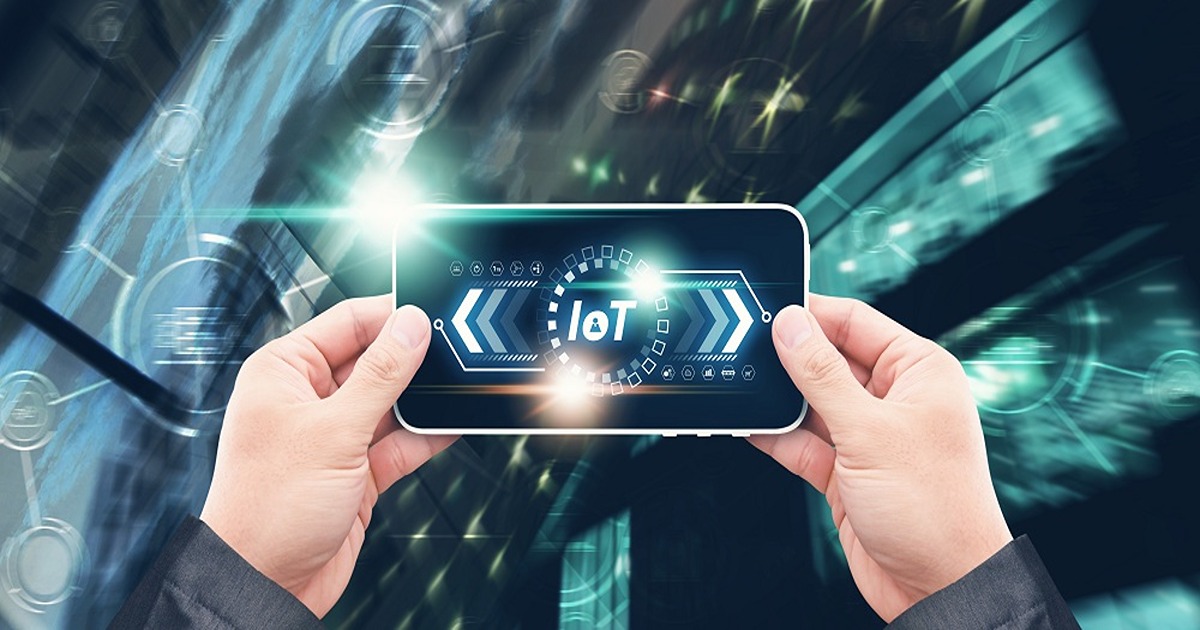
Enterprise Iot
Article | May 11, 2023
The evolution of internet-based market models has changed the way businesses operate. Present-day businesses know that data visualization in business intelligence is integral to competitive success. Therefore, businesses are now expanding their data and intelligence retrieval capacities. As a result, IoT (Internet of Things) data visualization is gaining popularity among industrialists and researchers across various disciplines.
In corporate finance, IoT-based efficient data visualization analyses data from multiple sources with the help of corporate analytics management tools and manages data quality for business intelligence to reduce the risk of leaks.
Impact of IoT Data Visualization on Corporate Finance BI
Data is everywhere— right from a customer's first visit to your company’s website until he signs out, all the behavioral patterns and data are tracked. All this data becomes useless unless it is utilized for a particular purpose.
Analyzing this data to predict future trends is one of the significant benefits of smart data visualization tools and technologies. It helps to slice and dice the data gained from different sources of different complexity levels to the minute granular level. Business intelligence utilizes these insights and the existing database to run risk analysis.
It gives an overview of your financial performance and the risks and exposures it faces. And if you switch the KPIs at the center of any dashboard, your entire team can instantly access the most important and relevant data.
IoT data visualization can measure big data on customers more efficiently, allowing organizations to add value to their customers. Customized tools will analyze your customers’ data and produce reports according to specific customer needs to help you get a deeper insight. Corporations can also utilize this data to better understand their competitors’ benchmarks.
Customizable IoT Data to Store Millions of Data Points in One Place
IoT collects millions of data from various complex sources. The data visualization dashboard contains multiple widgets that convert this data into various forms, such as line graphs, geographical maps, bar charts, pie charts, gauges, heat maps, etc.
This information, transmitted into multiple visualizations, helps organizations to unlock every piece of data into a valuable asset.
The Benefits of Using IoT Data Visualization
Businesses can collect, analyze and monitor a variety of data using IoT, such as internet usage data, video surveillance data, mobile app usage, and social media. It helps businesses to design products and provide personalized value-added services to drive better consumer engagement. Here are some key benefits IoT data visualization offers:
Unlock multiple insights across various verticals
Addressing important financial concerns proactively
Combination of multiple data sources into a single insightful dashboard
Multi-layered visual data.
Combines new data with the existing data to analyze new business opportunities.
Better performance on IoT data flow.
Analyze multiple data correlations in real-time
Improved Collaboration
Well-coordinated and efficient performance.
Cost reduction
Accurate data interpretation
Mitigate risk factor
Better decision making
Conclusion
Hands down, IoT data visualization intelligence in a company’s business operations will lead to better decision-making. But, before you choose an IoT data visualization tool for your business, you should know what kind of data you need to analyze and if you need any additional historical data. Because IoT services offer data visualization tools and techniques to analyze and monitor the data accordingly to predict future trends. So, it’s important to identify the goals before selecting a tool for your organization.
Read More

IoT Security
Article | July 17, 2023
Every major industry, including retail, transportation, banking, healthcare, and energy, has significantly benefited from the Internet of Things. Processes like supply chains are where the Internet of Things best demonstrates its promise. Applications for management, forecasting, and oversight aid fleet managers in increasing distribution's operational effectiveness and decision-making openness.
Some of the primary goals for IoT deployment in supply chain management include tracking and monitoring. For example, warehouse and fleet managers can use technology to keep an eye on their stock and freight.
Reasons to Use IoT in Supply Chain Management
Real-time Location-tracking
Thanks to the Internet of Things, managers have access to a consistent stream of real-time data on the product's location and the environment surrounding transportation. You may keep track of the delivery of both finished items and raw materials, and you will be informed if the product is transported in the wrong direction.
Monitoring of Storage Conditions
Environmental sensors allow management to monitor cargo conditions and take immediate action when something changes. One of the most popular IoT supply chain systems, for example, collects data on pressure, humidity, the temperature inside vehicles, and other factors that could harm the goods and then automatically adjusts the environment.
Enhance Your Emergency Planning
Supply chain managers can design routes with the use of IoT and data analytics, taking into account traffic, weather, potential accidents, and other delay-causing events that may occur along the way. The Internet of Things collects all the data required to create adaptable backup plans and identify the source of any current delays. Also, supply chain managers can get alerts from the system in real time, which speeds up reducing risks.
Forecast Goods Arrival and Movement
IoT devices and data analytics systems are used by managers to enhance the decision-making process and boost the accuracy of delivery estimates. Real-time tracking lets businesses keep track of products as they are shipped, predict when they will arrive, and plan for and reduce the risk of delays.
Conclusion
There are many different IoT applications for supply chain management. For example, it improves communication between parties, makes it easier to track and monitor commodities, and makes planning more precise.
As long as you have a clear goal for what you need the technology to achieve for you, an IoT-based platform is an excellent investment for both small and large organizations. It's also essential to bring on a talented team for the design and development phase.
Read More

IoT Security
Article | June 27, 2023
Edge computing enables the IoT to move intelligence out to the edge. If organizations have a lot of data and need to use it, they should do so in end-to-end paths, environments with lots of sensors, or environments where a lot of data is generated at the edge, thanks to the Internet of Things (IoT) and edge data sensing. Additionally, traditional methodologies fall short of the necessary standards when dealing with real-time information and the growing amount of unstructured data, which includes a sensor and IoT data. For management, power concerns, analytics, real-time needs, and other IoT situations, speed and high-speed data are essential elements. This enables edge computing to handle data.
The Internet of Things (IoT) benefits from having compute capacity close to the location of a physical device or data source. IoT device data needs to be processed at the edge rather than traveling back to a central site before that analysis can be done in order to react quickly or prevent concerns. For the data processing and storage requirements of IoT devices, edge computing serves as a local source.
Benefits of Using IoT and Edge Together
The connection between IoT devices and the main IT networks has less latency.
Greater operational efficiency and quicker response times.
Network bandwidth improvement.
When a network connection is lost, the system continues to run offline.
Utilizing analytics algorithms and machine learning, local data processing, aggregation, and quick decision-making are possible.
Industrial IoT, often known as IIoT, is the application of IoT in an industrial setting, such as factory machinery. Consider the lifespan of the large, factory-used machinery. Equipment may be stressed differently over time depending on the user, and malfunctions are a regular aspect of operations.
The parts of the machinery that are most prone to damage or misuse can be equipped with IoT sensors. Predictive maintenance can be performed using the data from these sensors, cutting down on overall downtime.
Because IoT devices can be used as Edge Computing, the line between IoT and Edge Computing can occasionally be razor-thin. However, the most significant difference is the ability not only to compute data locally (in real-time) but also to sync that data to a centralized server at a time when it is safe—and feasible—to send.
IoT and edge computing are both here to stay since they fulfill crucial societal and commercial needs.
Read More

Software and Tools
Article | September 23, 2022
For businesses to grow, they must be armed with the right technology and implement the right strategies to get a high return on their investments. With an IoT strategy, you can successfully make sense of the high volumes of data generated. IoT is about having devices with sensors communicate with other devices over the internet and share real-time data or parameters to maintain healthy system processes. Sharing and transferring data in real time over the cloud creates a lot of data that needs to be carefully managed.
Not having a streamlined method to control and manage the volume of data to capture, send, transmit, and receive over the cloud poses many space constraints as the data piles up quickly. Furthermore, deciding what data to keep and what to discard, how long you need the data, and for what purpose are all critical. Some standard IoT devices include sensors, lights, alarms, and cameras that a smartphone can control.
Learn about the importance of data management in establishing an IoT framework below.
The Top Reason for Establishing an IoT Framework Needs Data Management
Learning from past data trends to make future decisions in an IoT framework is critical. Data management acts as a layer between the IoT devices generating the data and the software accessing the data for analysis and services. It helps review, analyze, and navigate the massive amounts of structured and unstructured data. Defining which actions trigger responses to create data in your process is necessary to monitor your product and services and to keep your customers satisfied. In an IoT framework, managing the large amounts of data that are generated and collected means learning from the past and predicting what will happen in the future.
Why is Data Management for the IoT Framework Crucial for Medium and Large Enterprises?
Creating a better product is essential to add more value to your product offerings and avoid recalls, keeping your brand reputation at stake. The more data, the deeper the analysis, and the more refined the product, the greater the need to manage large amounts of data efficiently.
The future of IoT data management is promising when it comes to improving all aspects of your business processes, mainly controlling the automation and manufacturing processes and software triggers. Check out the in-depth benefits of data management in IoT.
Data management in IoT helps conduct a field test of your IoT products before deployment.
Improve the uptime of your business production lines and equipment.
Perform seamless decision-making for planning, scheduling, and execution systems to meet the changing customer and market demands using accurate and current data.
Data management helps efficiently deploy IoT solutions such as enterprise resource planning (ERP), enterprise asset management (EAM), and manufacturing execution systems (MES) in manufacturing businesses.
Data management helps remote monitoring of automation systems and robotic systems in industrial IoT needs current data and management.
Improve production flexibility and responsiveness by welcoming smart manufacturing using IoT data management.
When it comes to the data management of IoT devices, different types of data management systems take care of structured and unstructured data.
8 Data Management Systems for Your Enterprise IoT Devices
IoT device management means registering, organizing, monitoring, and remotely managing IoT-connected devices at scale. Various cloud architectures with different data management systems help with efficient IoT device management. In addition, equipment data, sub-meter data, and environmental data help track the performance of your IoT devices through IoT data collection. Let's find out how data management systems for IoT devices would help develop an IoT strategy for your large enterprise.
IoT gateway device management involves many steps in keeping your operations healthy and maximizing uptime. These are provisioning, authentication, configuration, control, monitoring, diagnostics, software updates, and maintenance. In addition, data management systems aim to make data available for analysis in the long term. The different data management systems are as under:
Querying
Production
Collection
Aggression/Fusion
Delivery
Pre-processing
Storage, updating and archiving
Processing or analysis.
These data management systems capture, organize, store, retrieve, and analyze data when required. Sorting out the data management in IoT will initiate your internet of things database scalability. An IoT data lifecycle is built around the data management systems in the data flow, which acts as guidelines or checkpoints for a smooth data flow across your IoT platform. Let us unfold them below.
Seven Guidelines for Cost-Effective IoT Data Management
• Querying: Accessing and retrieving data for temporary monitoring. For example, you could ask IoT devices or sensors for data in real time to learn more about trends and patterns.
• Production: Sensing and transferring data by the "things" or IoT devices in an IoT framework is the data production phase. Pushing the data to the cloud network and the IoT database servers and reporting it to the interested parties. This rich data has different formats such as audio, video, or image content, and is time-stamped and geo-stamped.
• Collection: Collecting and retrieving data for a predefined time interval and sharing it with the governing components within the gateways is a part of the collection. Filtering out valuable data and compressing it accordingly helps seamless data transfer. It is also a part of data collection.
• Aggression or fusion: Part of the aggression is real-time data transmission across the network to increase the rate of data streaming over the limited bandwidth. It pulls together information from different points of contact and reduces the amount of information that needs to be stored and sent.
• Delivery: Collating the data from multiple touch points across the IoT framework and summing it up for the final responses is a part of the data delivery management system. Making data ready for permanent data storage is also a part of it.
• Preprocessing: Removing redundant, missing, and incomplete data and making all the data unified is a part of preprocessing. Data cleaning is also one of the preprocessing methods applied to data mining.
• Storage, Update, and Archiving: Storing data in an organized way for long-term offline usage or big-data systems is a part of the storage data management system. It can be decentralized or centralized as per the required capabilities.
• Processing or Analysis: Retrieval of stored packets of data accessed for an efficient analysis is a part of data processing or analysis in a data management system.
Whenever handling large amounts of data, an efficient data management system will solve numerous problems concerning your IoT strategy, as discussed above. Find out exactly what can keep you from implementing IoT.
5 Growth Challenges in Data Management for IoT Technology
High Initial and Ongoing costs:
Upgrading the hardware and software infrastructure that is already in place, hiring IoT-trained staff, and building an IoT infrastructure will all require upfront and ongoing costs.
Vulnerability:
Your IoT security strategy is a critical aspect of your IoT platform strategy. Multiple data points for structured and unstructured data captured, transmitted, stored, and retrieved by software come with security risks.
Procuring Quality Hardware:
Finding compatible hardware for your requirements and building an infrastructure around them can take a while regarding decision-making for scalability. In addition, hardware must remain supportive of the quick adoption of future software innovations.
Installation and Upkeep of Hardware Infrastructure:
Setting up a complex IoT strategy with the implementation of IoT data management, infrastructure, security, and more takes time and expertise. One of the other big worries is keeping the hardware infrastructure in good shape so that security can't be broken.
Constraints on Scalability and Agility:
The humungous IoT data traffic poses a severe concern for appropriate control of the data storage, retrieval, analysis, monitoring, and everything aligned with IoT data management. Also, the fact that IoT data doesn't last as long as other types of data is a risk to the way data flows and is collected.
Now, let us figure out how to implement IoT that aligns with your business objectives.
How to Implement IoT in Line with Your Business Goals
A complete analysis of your immediate and long-term business objectives is critical as it helps decide which data to keep and which to discard after how much time. Every byte of data you hold and analyze comes with a cost for storage, retrieval, and security, which can be a barrier to implementing IoT for your business. Identifying IoT data collection helps you align your IoT implementation strategy with your business objectives. Here are a few ways to address your implementation of IoT.
Consider the use cases of IoT data management as per the processes involved in your business.
Implement security protocols for encryption and restricted access as per the type of business data.
Organize training for the existing workforce and hire skilled professionals in IoT.
Understand your business's data requirements, including the data collection process.
Allow enough budget for IoT infrastructure and resources.
Consider the design and development of the product as per the customer's behavior.
Consider the impact of the environmental conditions affecting your business.
Measure real-time performance metrics using a suitable IoT sensor to streamline your process.
Take automated decisions with the help of AI once IoT sensors recognize the performance gaps.
Choose the right IoT platform that defines how you communicate and handle data.
Understand that IoT implementation is a complex process and needs commitment.
Collect only the important data and statistics for a smooth workflow and to lower the cost of putting IoT into place.
Taking into account where your storage and production lines are located, choose the best ways to gather, organize, and analyze your data.
Use cold path analytics for the long term and hot path analytics for real-time data storage.
Building infrastructure with scalability in mind will help small businesses grab market share quickly and efficiently. As a result, medium-sized enterprises will find prominence in their industry. Using data visualization in business intelligence allows for rapid optimization of your IoT devices and for controlling data management costs in the long run without negatively impacting performance. Explore more about IoT data visualization down below.
Role of Data Visualization in IoT for Business Intelligence
With IoT data visualization, you can optimize business processes by applying visualization business intelligence to get your business ready to scale. Discover the role of data visualization in your IoT strategy.
Make sense of the data you've collected or saved.
Patterns and trends should be recognized.
Check the data for inconsistencies and errors. The output should then be visualized over time for analysis and monitoring.
IoT infrastructure and devices improve performance and streamline the IoT data flow.
Analyze real-time data correlations across multiple business verticals using the IoT communication platform.
Make future decisions based on the data captured in the past.
Get actionable insights on customer behavior and
Identify the factors impacting your business.
Once you identify the gaps in business processes, you can make changes to the process and further improvise. Creating an optimized workflow and detecting errors and faults in a process early are the primary goals of data management in an IoT strategy. Tackling vulnerabilities in data security and data redundancy helps the cost-effective implementation of IoT for small businesses, opening avenues for scalability. With IoT data management, you can also optimize your products to make customers happier and get a bigger share of the market, which is great for your business's growth.
Summarizing
With secure access control, encryption, software updates, endpoint security, and communication protocols in place, the relentless power of data visualization for analyzing and monitoring the captured data has proved to be unmatched. Bringing resilience and giving a rapid boost to the scalability of your medium and large enterprises is now becoming a norm with organized IoT data management.
FAQs:
• What is the most significant benefit of IoT?
IoT helps devices or sensors report real-time data for smooth interconnected production operations. In addition, IoT keeps healthy functions throughout and minimizes the turnaround time for troubleshooting and maintenance.
• What are the three types of IoT?
Depending upon the needs from time to time, the three types of IoT include short form, medium form, and long form. The short form meets immediate needs, the medium form meets future needs, and the long form keeps the system running smoothly.
• How does data analytics help IoT?
Effective process optimization is possible by analyzing the data generated in an IoT framework. It helps boost efficiency, and connectivity, cut costs and unlock scalability.
Read More